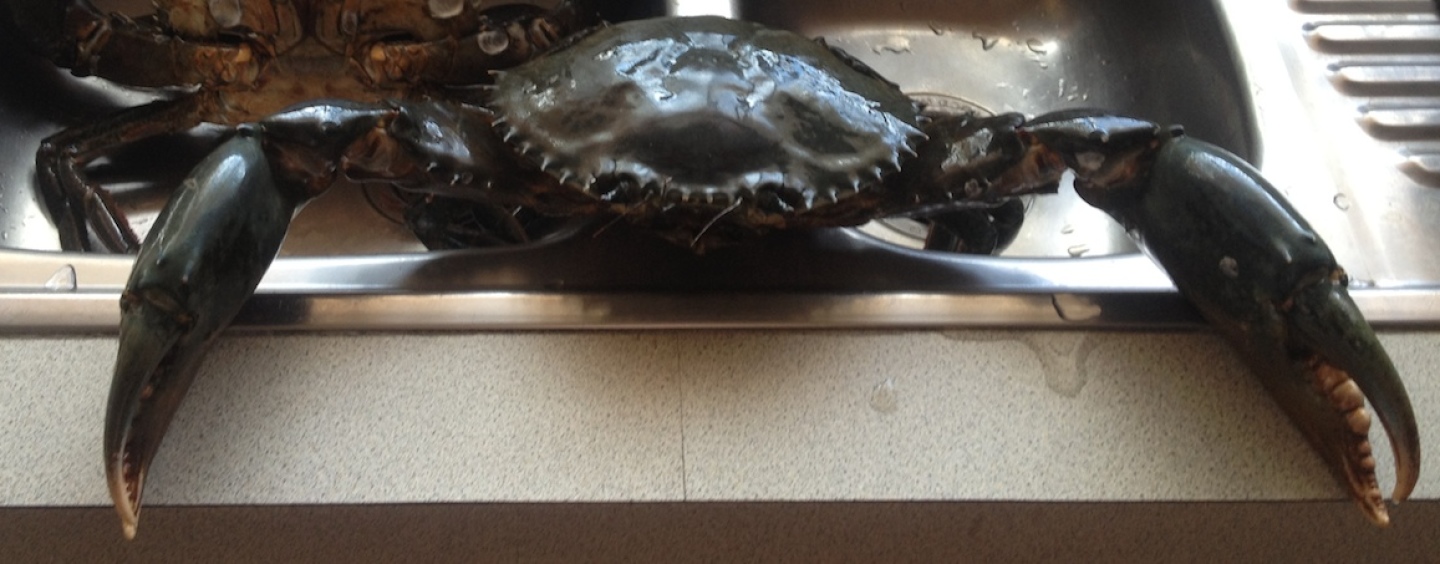The Gold Coast has countless mangrove islands and mud banks with clean waterways with abundant food source making prime real estate for many crab varieties. Although I personally prefer setting pots between Cabbage Tree Point and the Pin Bar, with many great locations for both blue swimmers and mud crabs, you can catch crabs just about anywhere on the rivers, creeks, canals and waterways of the city.
Varieties:
The Gold Coast waterways are home to blue swimmer crabs, mud crabs, coral crabs and spanner crabs (off shore).
Strategy:
When catching mud crabs, set pots in mangrove creeks or deep holes in the main channels. Crabs are not keen on fresh water so the activity will tend to decrease depending on the rains. The coming months of August to October are early in the season, so bait-heavy and long soaks, ideally overnight, are best when the crabs are more active and likely to feed.
Traps (pots):
The round collapsible pots with four funnel entrances work best for blue swimmers. The throw-and-go lobster pot-style with a single entrance in the top of the pot is more effective for mud crabs. Use a boat hook or a gaff to pick the float off the top of the water to save reaching so far over the side of the boat. Then, pull the rope until the pot is at the side of the boat. Be sure to give a really good shake to remove any mud or jelly fish.
Bait:
Fresh bait for crabbing is always more effective. For mud crabs, the best baits are chicken frames and whole mullet. For blue swimmers use oily bonito or tuna. If you want bait effective for either variety, try mackerel or Wahoo heads/frames, if available.
Several manufactured crab pots come with built-in bait bags. You may also use oyster mesh bags which you can make yourself as they are harder for crabs to destroy yet still allow a lot of smell to be released.
Rules:
There is a limit of four pots per person over the age of 16, with a maximum of 12 pots per boat. Pots must all have ID tags listing the owners name, address and contact number, as well as a light coloured float no less than 100 millimetre in any dimension. Likewise, the float must have an ID tag with the owner’s details that match the ID of the pot. Only male mud crabs or sand crabs can be taken legally and must be 15 centimetres from point to point on the mud crab, while blue swimmers are 11.5 centimetres notch to notch. A bag limit of 10 per person also applies to mud crabs. Blue Swimmer crabs currently do not have a limit. Female mud and blue swimmer crabs cannot be taken, so must be returned safely into the water.
Equipment:
You will need a caliper rule, an F-shaped tool used for measuring horizontal distances. Once you have a catch, you will require bailing twine to tie them up. Ice will keep crabs fresh and put them to sleep if being eaten the same day. Take plenty of extra bait. Also, do not forget your fishing gear to pass the time between sets.
Holding crabs:
When attempting to hold a crab, you require confidence. Otherwise, you are more likely to get nipped. Crabs are very aggressive and strong, so they should be approached from the rear while applying downward pressure on their back, so you can hold them by their rear two flippers. This is the safest way to pick up both mud crabs and blue swimmers as they cannot reach you with their claws if handled this way. Alternatively, use long handle bbq tongs and a pair of gloves. Do not forget to take band aids, just in case!
Storage:
Blue swimmers will not last long out of the water. The only way to keep them alive is in a bait well. Mud crabs, however, are very resilient and will survive several days out of water if they are not left in the sun. Mud crabs can survive three days out of water and if returned to the water will swim away like nothing ever happened. The best storage is to tie mud crabs up and keep them in an esky or tub with a damp hessian cloth or towel over them. This keeps the crabs cool and quiet until you are ready to consume.
Cooking:
Blue swimmers will take 8-10 minutes in a pot of boiling salt water, while mud crabs take approximately 15-20 minutes when they are uncleaned. You may prefer to clean the crabs firstly by removing the carapace and all the guts which will prove to be a cleaner taste. Once cleaned, blue swimmers will take 5-6 minutes in boiling salt water, while mud crabs will take 9-12 minutes depending on their size.
Good Luck:
You can catch crabs on your own. It is quick, easy and painless. When you offer friends or family a fresh feed of crabs, you will be amazed at the number of helpers willing to set bait and lift pots. Make sure your keep are full of meat by pressing gently but firmly beside the second back leg on the belly side.
More importantly, be sure to stick to the rules! Always check out daf.qld.gov.au for updated crabbing rules.
By Luke Rafton




























